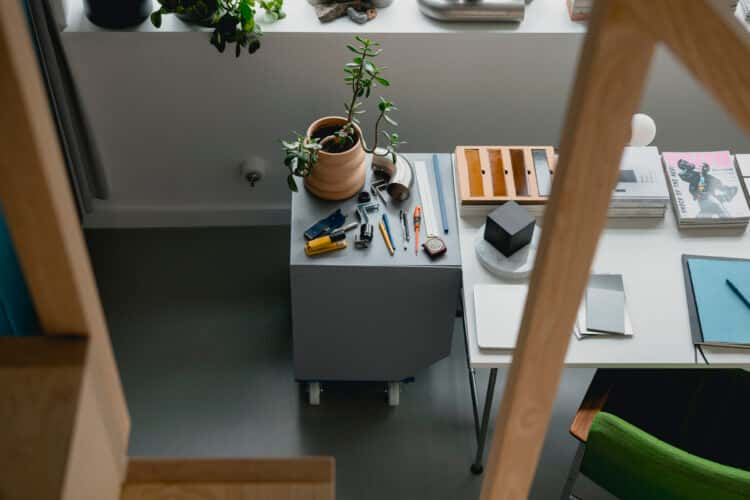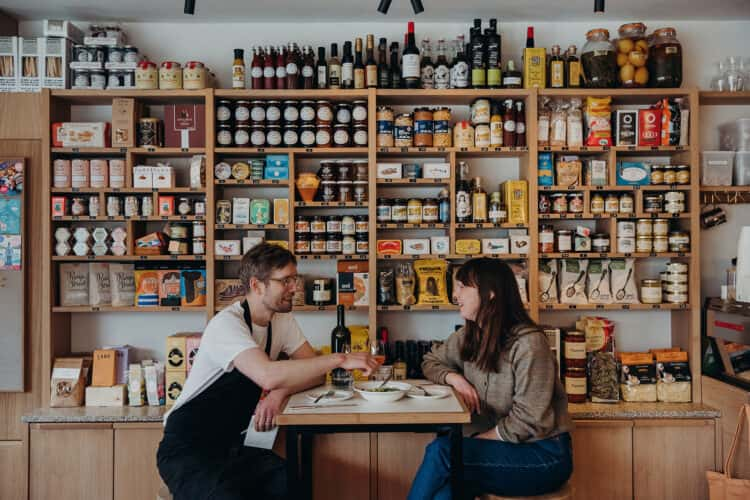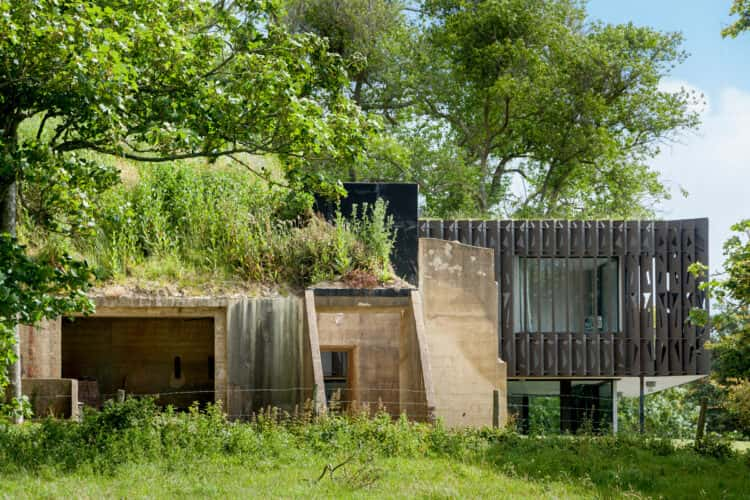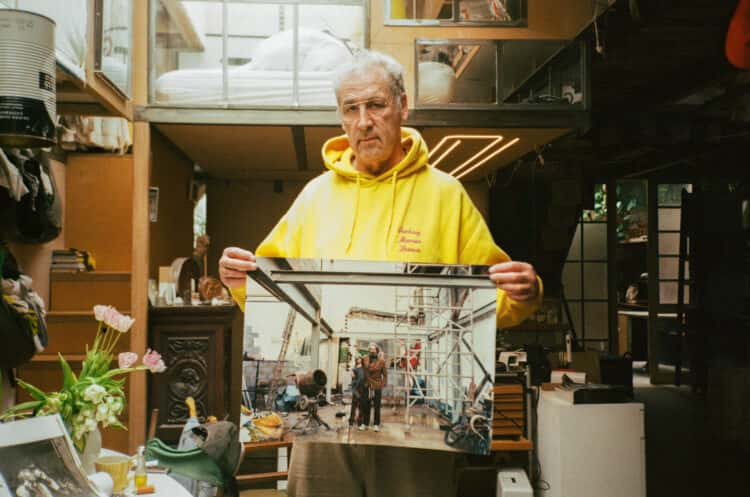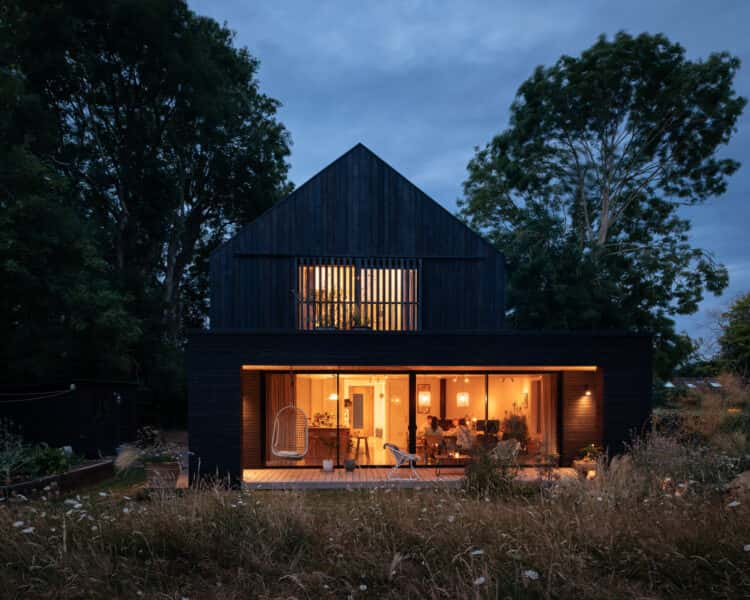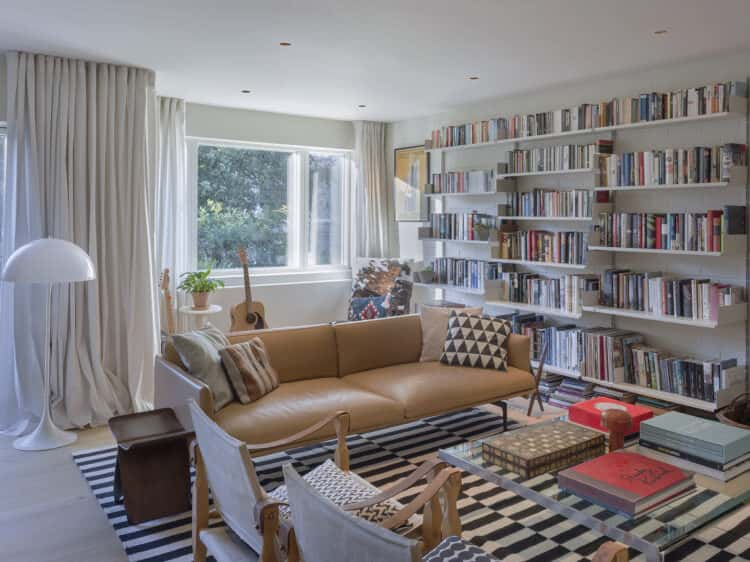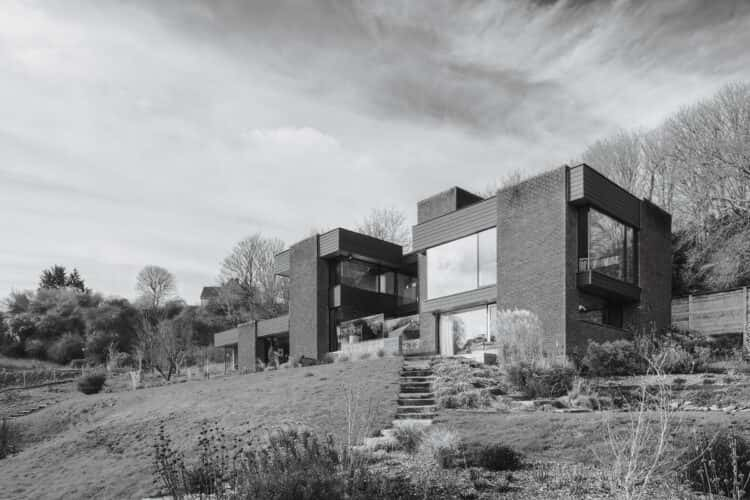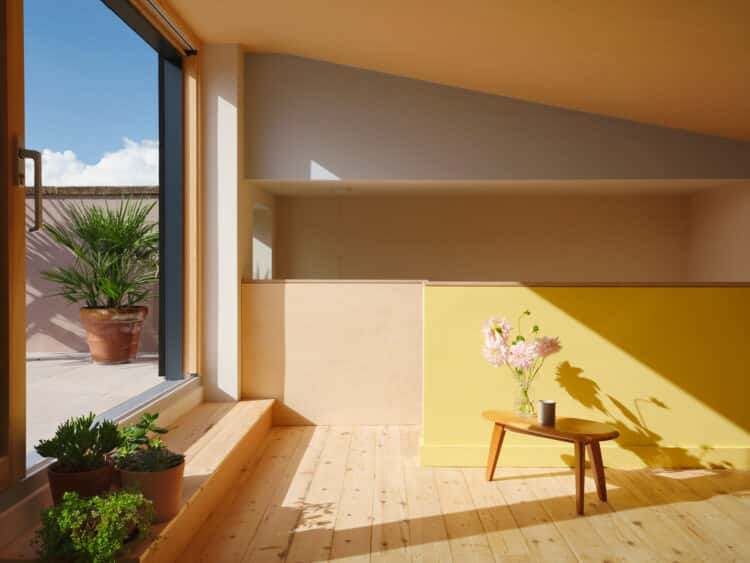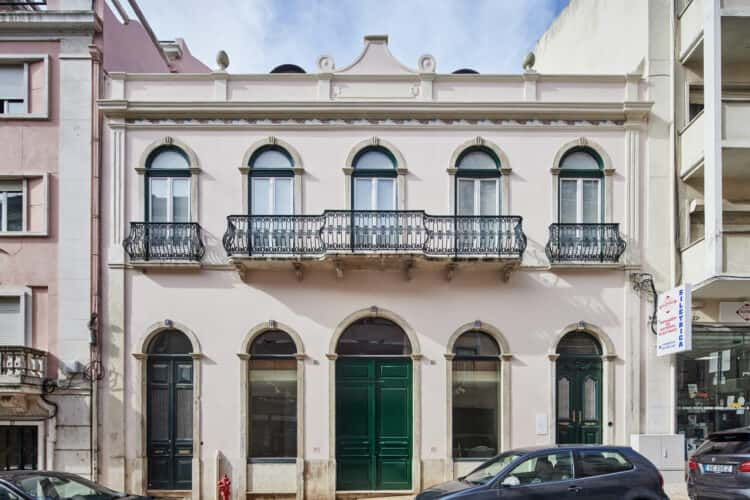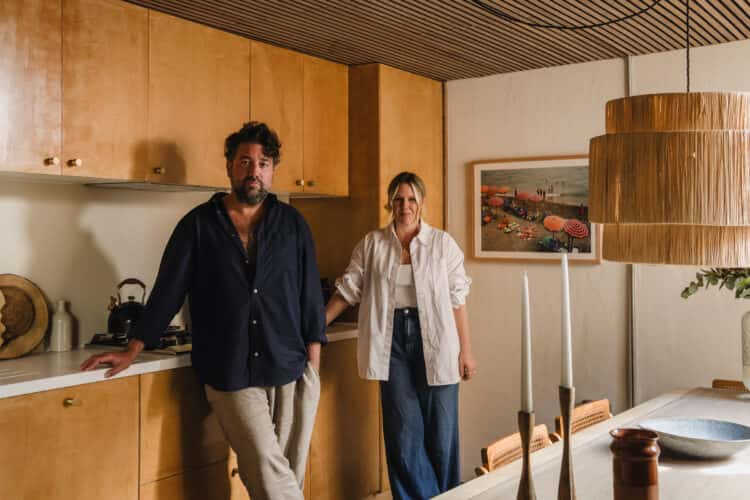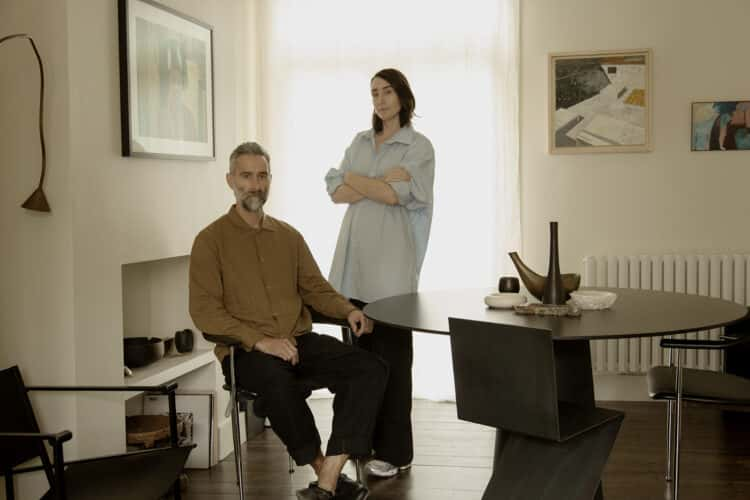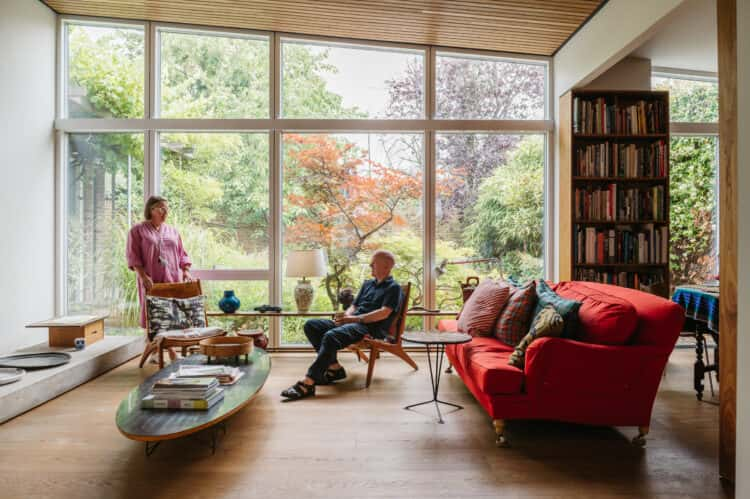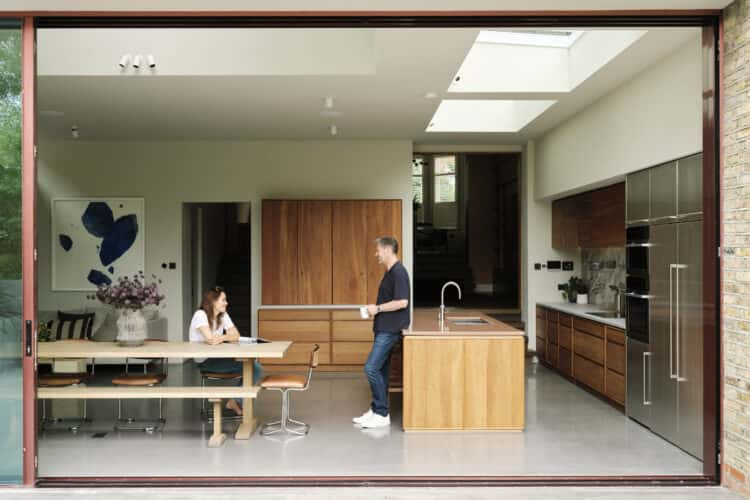Furniture designer James Stickley’s cleverly zoned live/work loft in east London
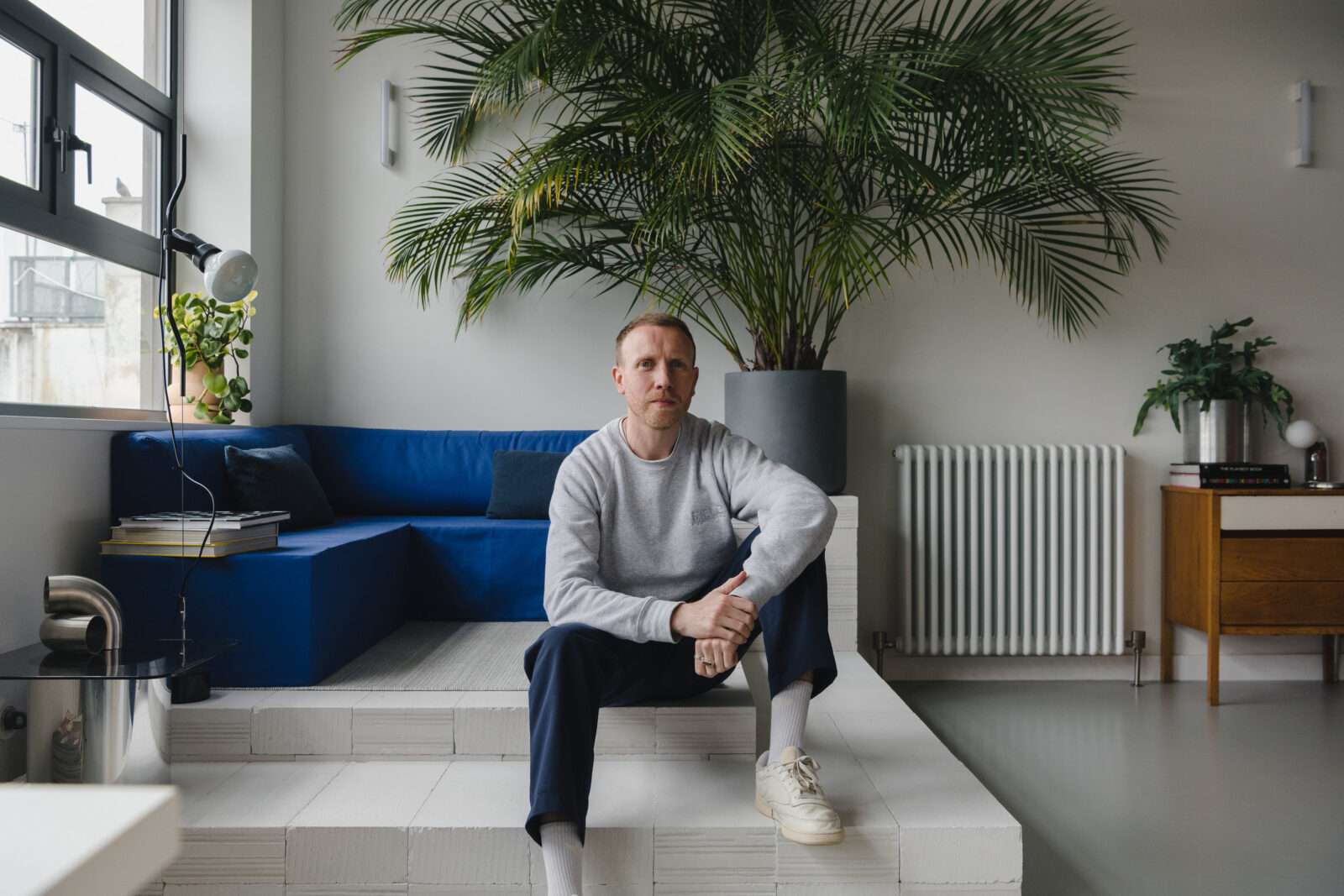
Words Kate Jacobs
Photography Elliot Sheppard
Production Harry Cave
Much like his home, James’ designs have a graphic, minimalist quality and are often unexpected in their form, material and colour. The same is true of his aesthetic as an art director working in TV. “My approach is quite bold across everything I do. The difference is that when you work in TV, things are often filmed one day and dismantled the next. I love the longevity of furniture.” When it comes to designing, “I like to get to know my client’s style and incorporate that into the work,” he says. But when he became his own client with this place, the process was more challenging than he expected. “I worried that I would get bored of something and I would agonise over a colour choice or material finish,” he reveals. Thankfully, having lived in the completed loft-like home for a year, he hasn’t yet grown tired of it – but that doesn’t mean the renovation itch has gone away quite yet…
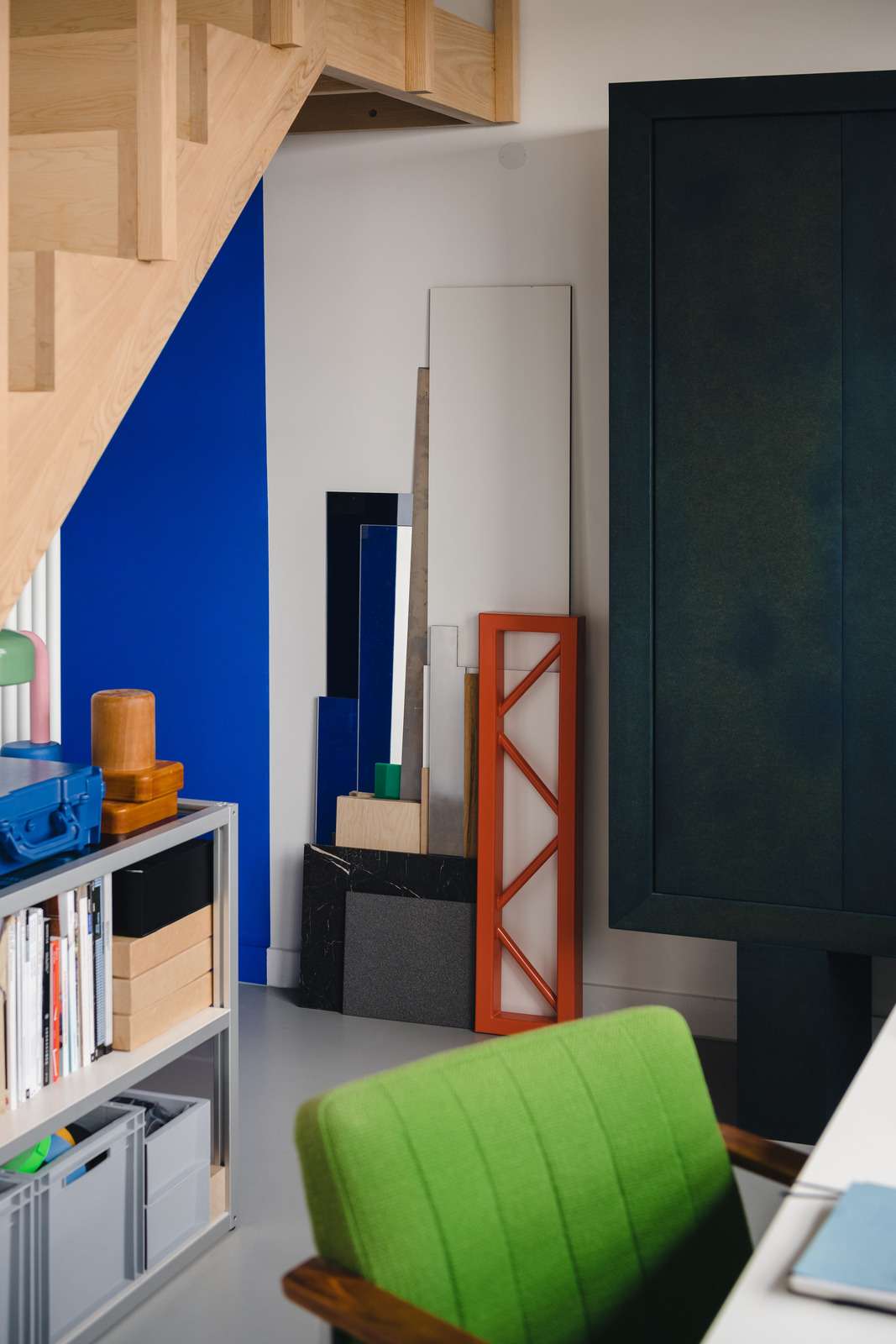
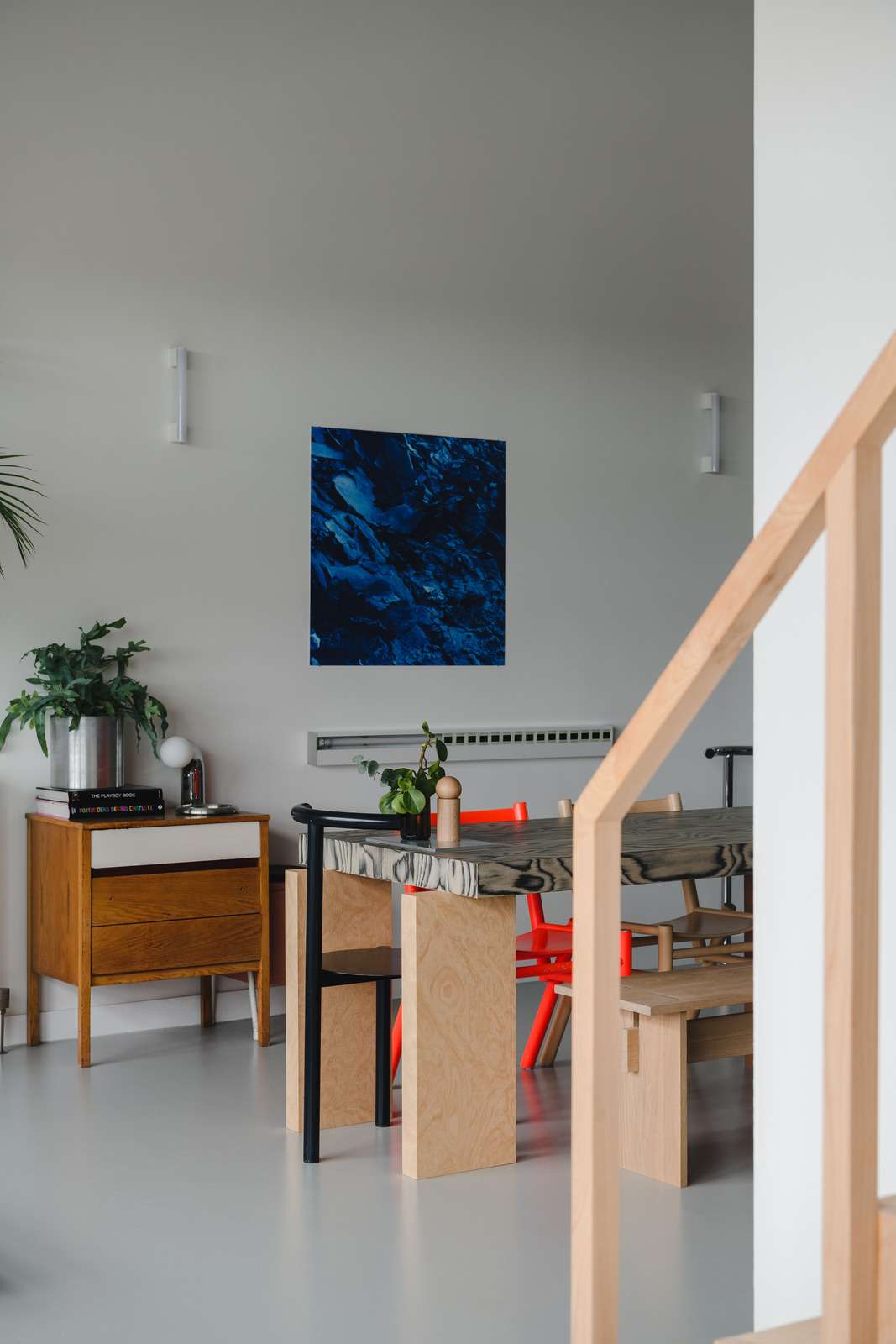
James: “Before I moved here in 2021, I’d been living in a flat in Bethnal Green, on the top floor of a Victorian house. It was great but I wanted more space – somewhere I could work from home and a place I could put my own stamp on. I wanted to live in a totally different type of building to my old flat, so I was viewing a lot of 1950s and 60s local authority blocks, which tend to be spacious and have large windows. I didn’t really look at Forest Gate as an option – I thought it was all rows and rows of terraced homes – but then I spotted this online…
“As soon as I walked in I knew it was what I’d been looking for. It had amazing light and the space was incredible, with beams, high ceilings and a mezzanine level. The whole thing had been converted quite badly in the 2000s – the kitchen was already falling to bits, the radiators were rusty… It felt tired and low quality. But that was good for me, as I didn’t need to feel bad about ripping it out and starting again.
“I was restricted in what I could do by the lease, which said I couldn’t make any structural changes, so I had to be clever about creating large but moveable elements. While I worked on the design for the kitchen, I had my builder remove all the beading and trim on the edges of the walls and around the doors, which made everything crisp and sharp. This small detail created a much sleeker look.
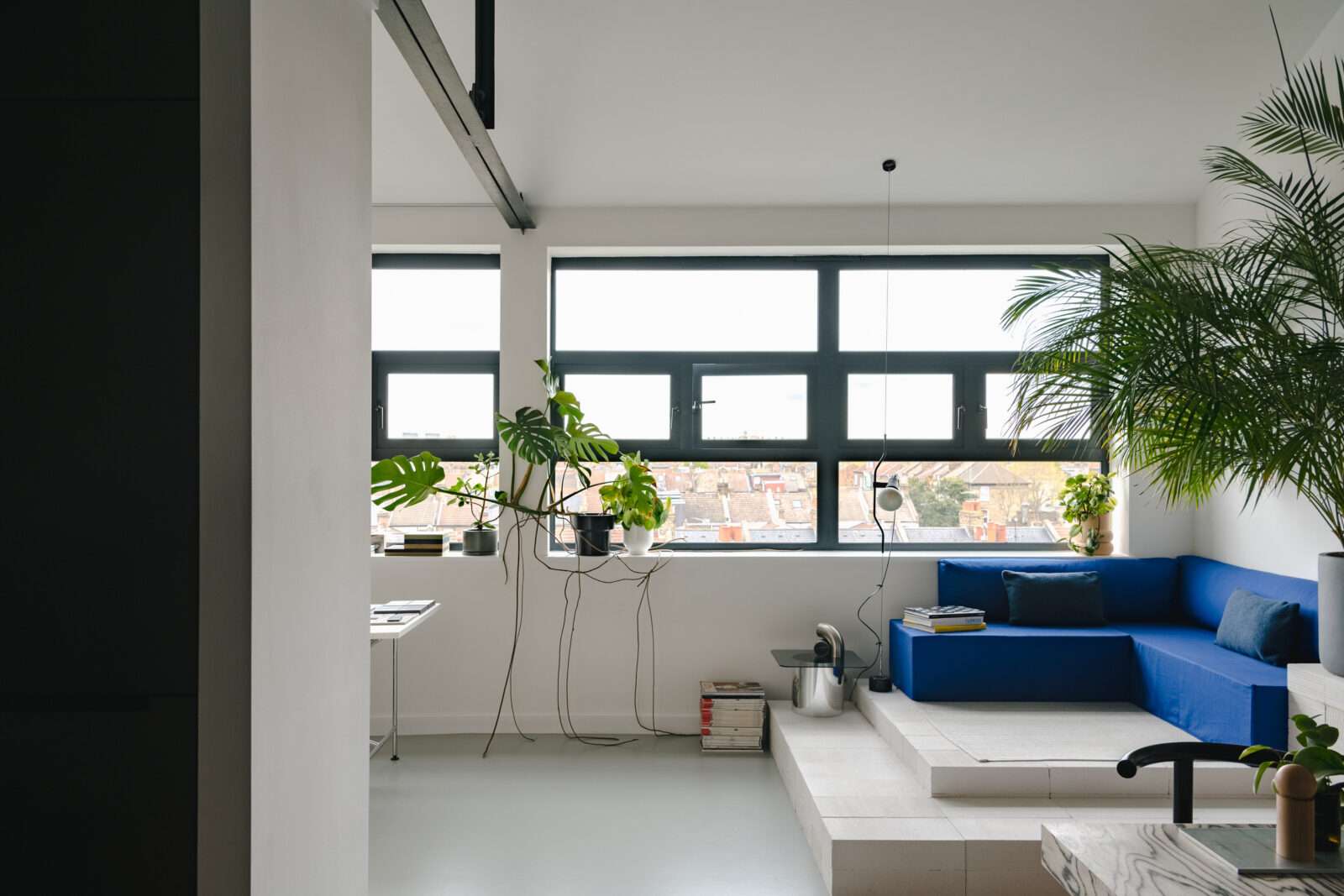
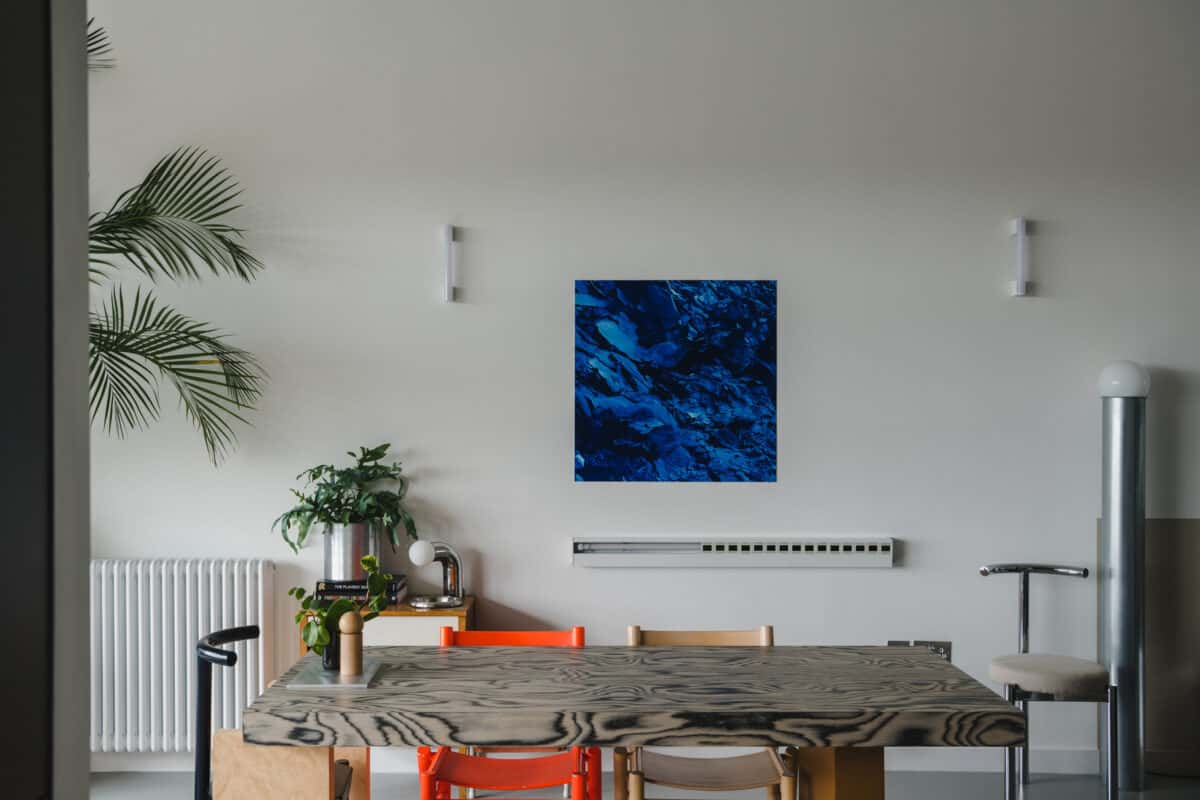

“I knew I wanted a stainless-steel worktop in the kitchen. A lot of people bend thin stainless steel around the board to make it look like a solid piece of metal, but I wanted to keep it in its original sheet form. I also wanted cabinets made from Valchromat, which is an engineered wood fibre and has an interesting texture and grain. I went through a lot of different colours combinations and eventually decided on that intense blue with black, dark grey and peach. The finished effect is that these staggered blocks of colour appear to shift in order depending on where you stand.
“I also wanted to design a kitchen island that looked like it was carved out of a solid block, even though it’s actually built of plywood and clad in medium-density fibreboard. It reminds me of children’s play blocks. People see MDF as a cheap material that you should hide or paint, but I think it has a really nice grain. When you oil it, it makes it more hardwearing and brings out the colour and texture.
“I see a piece of furniture as a sculptural object. It has to be practical but it needs to be interesting to look at too. Lots of my work is inspired by manmade things – construction sites, play parks, shipping crates – where form follows function, but their design is often unintentionally beautiful. For this reason, I also use lots of tubular metal, which is strong, versatile and aesthetically pleasing. You can bend it into lots of lovely curves. It comes from an early obsession with the Bauhaus school and the architecture of Richard Rogers. I’ve started using a lot of engineered wood too, with bold grain patterns that hold your attention and contrast with the metal.
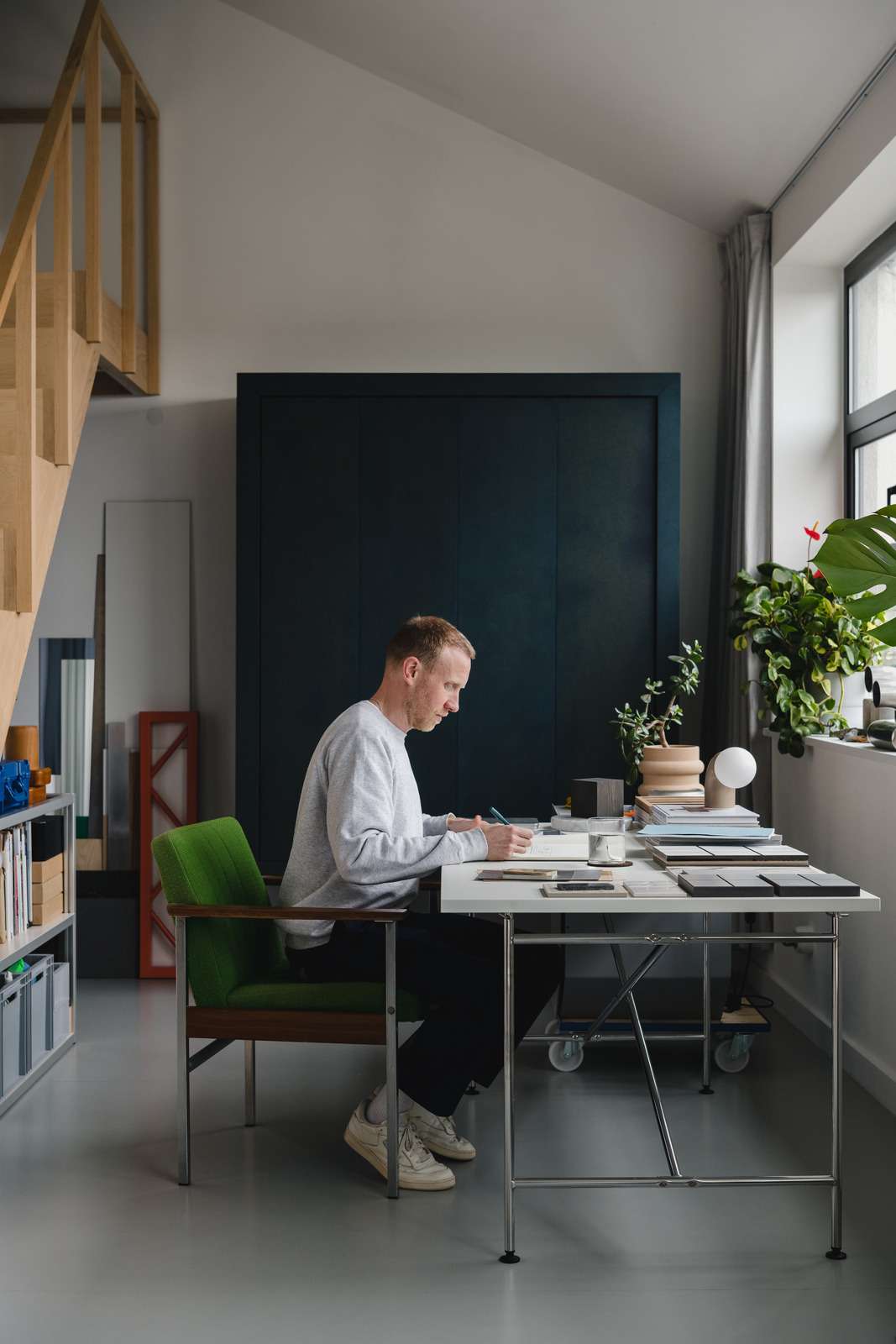
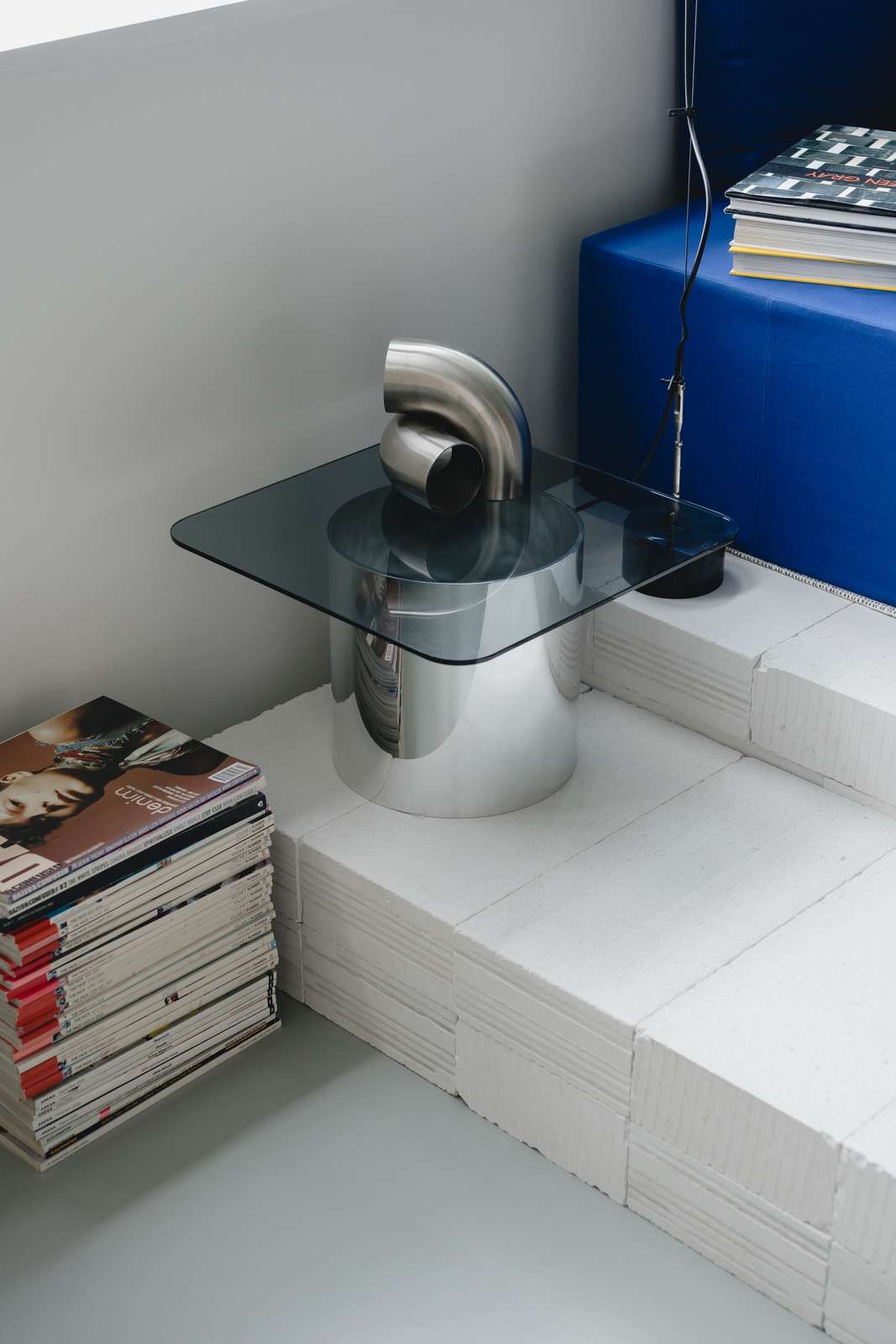
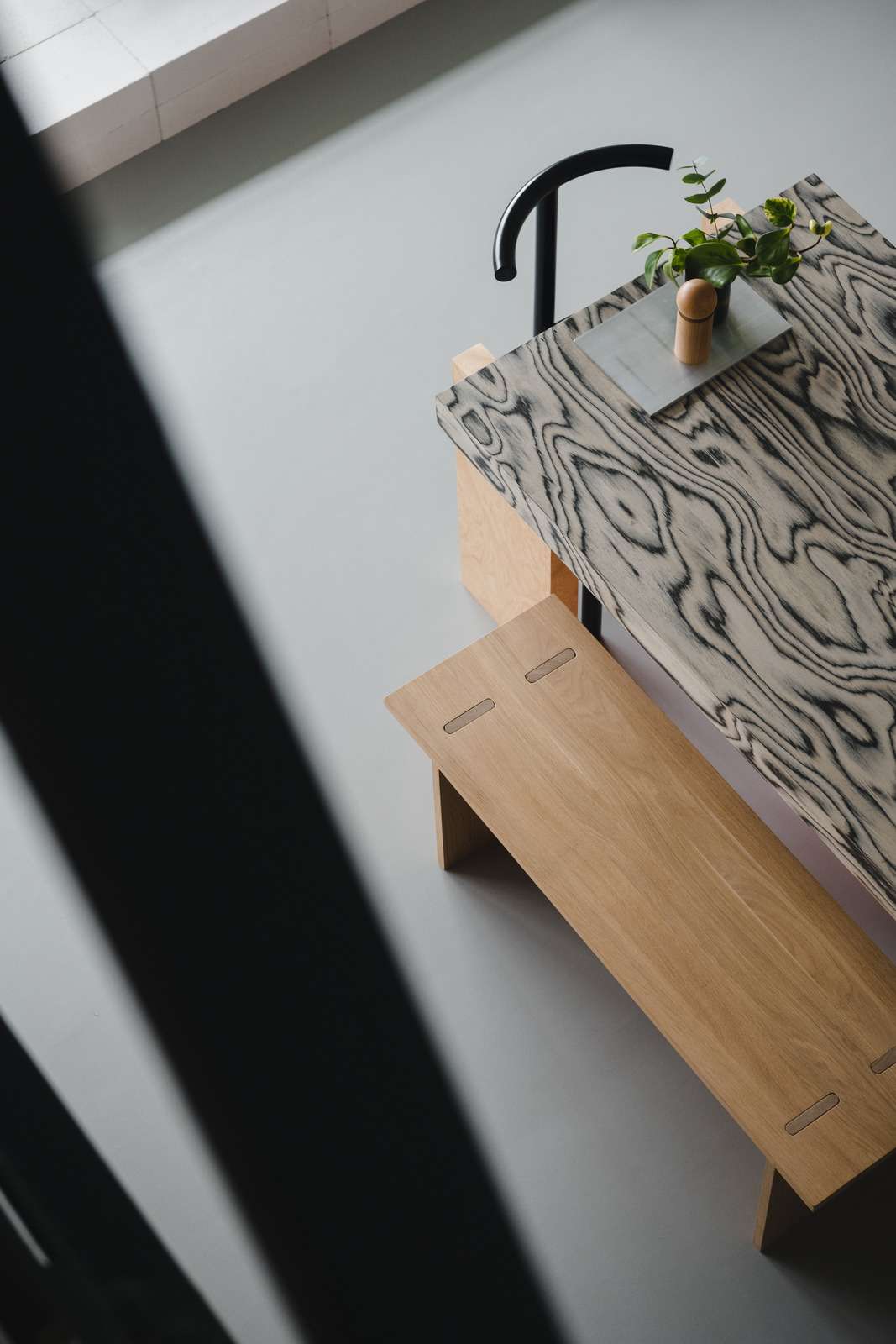
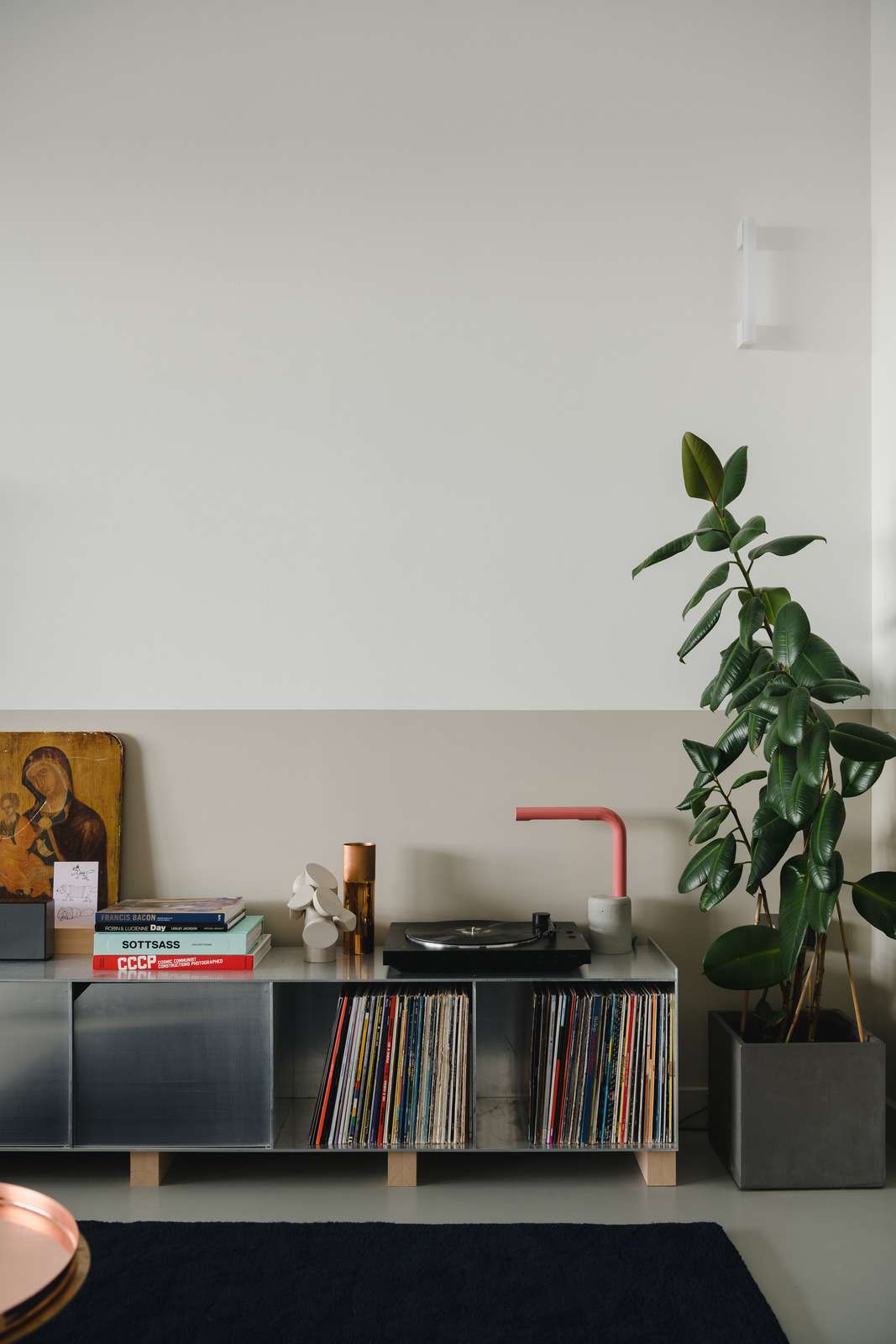
“In this flat, I’ve got a Hay sofa, Tom Dixon chairs and some mid-century cabinets, but I designed most of the pieces myself. The ‘Monolithic’ storage unit in my studio space doubles as a workbench. It’s another experiment with MDF, stained in a shade of dark blue. My ‘B’ and ‘M’ series chairs are in the flat too, which are made from tubular metal, as are my ‘Perry’ lights. And I designed the ‘Upton’ dining table specially for the flat. It’s a statement piece that uses three different veneers but, as with most of my designs, it’s still very simple in form.
“The main space wraps around the kitchen in a L-shape. My studio is on its own by the stairs so that I can seperate work and home. At the other end of the space, there’s a living area with a sofa, a record player and a projector for watching TV. I’ve zoned this corner with a band of grey paint. I chose Marmoleum for the floor for the flat, in a concrete-grey colour that brings the light in. It’s sound-absorbent, warm underfoot and recyclable so it’s a good piece of circular design.
“Next to the dining area, there’s the raised seating platform, which I created using breeze blocks. It was a cheap and flexible way of elevating the seating and I like how brutalist it looks. I went for super-lightweight breeze blocks that have a bit of pattern from the production process.
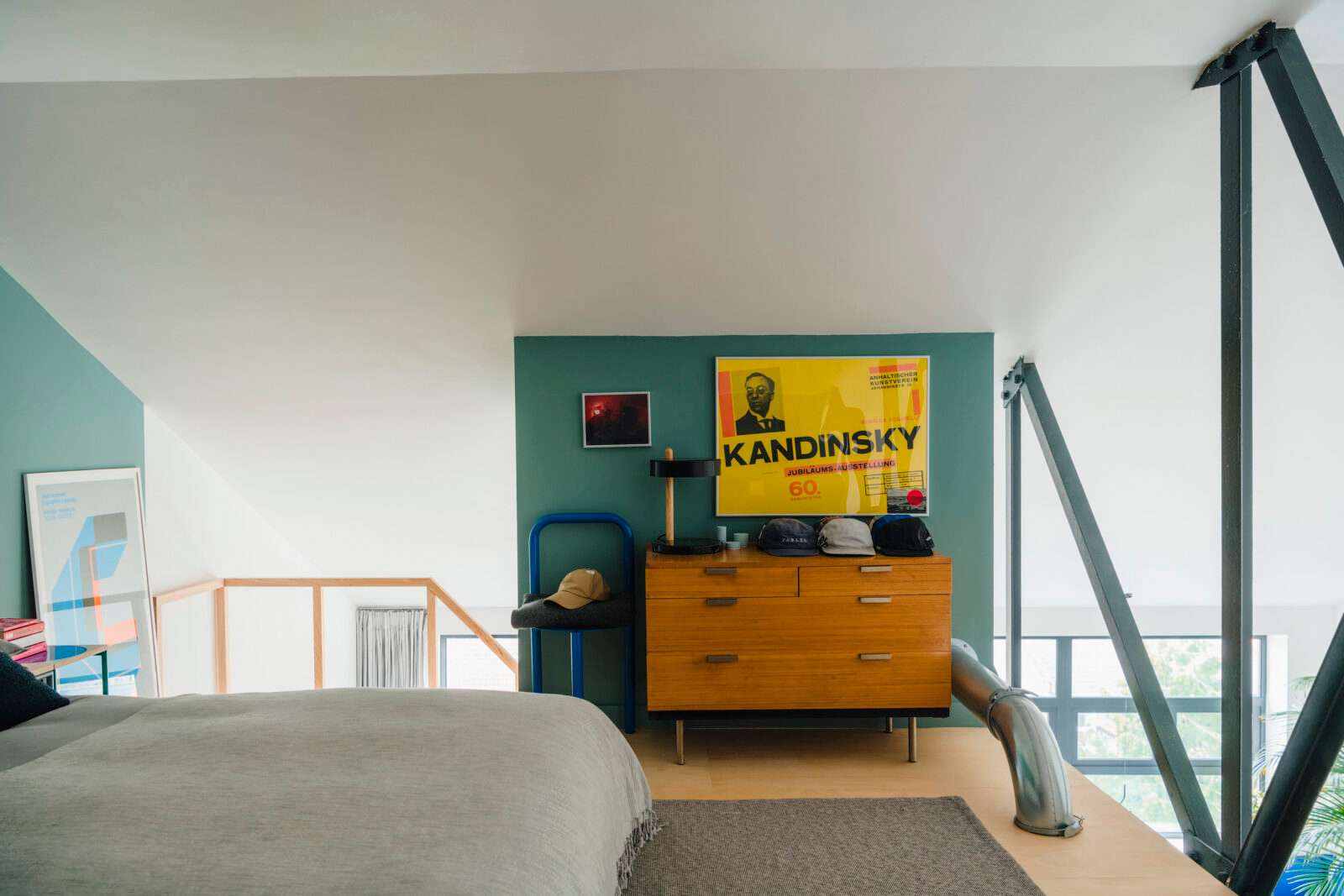
“I’m quite a social person, but I haven’t got into the habit of having friends round much yet. I’m often out working long hours, so I like having it as my own space. Being in Forest Gate means I’m near some good parks, as well as Wanstead Flats and an amazing pub called the Boleyn Tavern.
“When I first moved in, I thought I might stay for at least 10 years. I love it here and I want the dust to settle and to enjoy it without any builders or works happening, but I’m already getting the urge to do another project.”
Is there a home on The Modern House website that’s caught your eye?“The Void Space. The planning permission means you can turn it into whatever you want. And I love the Barbican – the design, the concrete and the way it’s a quiet oasis in the middle of the city.”
